Messier catalog
Messier catalog - the most popular catalog of galaxies and nebulae, especially for beginners.
In this catalog the brightest objects of the Deep Space are collected, which are accessible for observation in amateur telescopes.
List of Messier objects
Marathon Messier Charles Messier (1730-1817) - french astronomer. Since 1751 he worked at the Paris Observatory.
Charles Messier (1730-1817) - french astronomer. Since 1751 he worked at the Paris Observatory.
While searching for comets, Messier decided to create a catalog of foggy objects in the sky to facilitate the life of himself and other "comet catchers",
for distinguish these nebulous formations from comets..
There have been several releases of the Messier catalog , in which objects collected by Charles Messier, astronomer Pierre Meshen and other astronomers have been collected.
In total, 110 objects are included in the catalog - galaxies, nebulae and star clusters.
Objects are numbered as they are found and entered in the catalog.
He did not find all the objects of the Messier catalog himself. Messier studied the records of many of his predecessors, rechecking them.
Nevertheless, many objects are open to them.
 Astronomer Pierre Meschen, who worked simultaneously with Messier, discovered almost half of the objects from the Messier catalog.
His first discovery was the spiral galaxy M63.
Messier cross-checked Meshen's messages and put them in his catalog.
Astronomer Pierre Meschen, who worked simultaneously with Messier, discovered almost half of the objects from the Messier catalog.
His first discovery was the spiral galaxy M63.
Messier cross-checked Meshen's messages and put them in his catalog.
The first edition of the Messier catalog was published in 1774 and contained 45 objects.
The last edition was published in 1781 and contained 103 objects.
Messier wanted to stop at the figure of 100, but by the time the last manuscript was sent to the press, Meshen told about three more objects.
Messier interrupted the filling of the catalog due to severe injury, and also because the English astronomer William Herschel,
having acquired more powerful equipment, issued a catalog of 2500 objects.
The Messier catalog was added to the M110 facility after his death, because Messier observed some objects,
although he did not assign them separate numbers.
M104 - M107 were opened by Meshen, and M108 and M109 have already been mentioned in the description of the M97. M110, the satellite of the Andromeda nebula,
- Messier saw him, but did not consider it necessary to allocate.
It is Messier's catalog that we owe the presence of the letter M in the most used names of such objects as:
The globular cluster M13, the Andromeda nebula M31 ...
For the amateur astronomer Messier's catalog is especially interesting because it was compiled at the end of the 18th century,
when the telescopes were not yet very powerful.
This means that Messier's catalog contains only the brightest objects, which today are the easiest to see in an amateur telescope.
Messier himself later said that he had previously limited himself to a telescope with a focal length of 60 cm.
Although, there are quite noticeable objects that are not included in the Messier catalog.
For example, star clusters of Chi and Ash Perseus (NGC 884 and NGC 869) or galaxy NGC 3628 from Triplet of Leo,
which is not inferior to its neighbors M65 and M66. Therefore, Messier's catalog is well supplemented with the catalog of Caldwell.
A more complete catalog of NGC includes a much larger number of galaxies and nebulae,
but most of them require more powerful equipment than an "ordinary" amateur astronomer telescope.
List of Messier objects
Here is a complete list of Messier catalog objects. For the most notable objects, links to pages with their descriptions are given.
Filters:
Elliptical galaxies of the Messier catalog
| # in Messier and NGC catalogs |
Object type |
Coord.
α
δ |
Visual magnit. |
Angular size |
Constellation |
Note |

M32
( NGC 221 ) | Elliptical galaxy |
00h42.7m
+40° 52' |
8,1m |
9'×7' |
Andromeda
(And) |
|

M49
( NGC 4472 ) | Elliptical galaxy |
12h29.8m
+08° 00' |
8,4m |
10'×8' |
Virgo
(Vir) |
|

M59
( NGC 4621 ) | Elliptical galaxy |
12h42.0m
+11° 39' |
9,6m |
5'×4' |
Virgo
(Vir) |
|
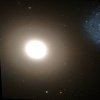
M60
( NGC 4649 ) | Elliptical galaxy |
12h43.7m
+11° 33' |
8,8m |
7'×6' |
Virgo
(Vir) |
|
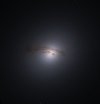
M84
( NGC 4374 ) | Elliptical galaxy |
12h25.1m
+12° 53' |
9,1m |
7'×6' |
Virgo
(Vir) |
|
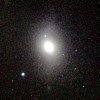
M85
( NGC 4382 ) | Lenticular or elliptical galaxy |
12h25.4m
+18° 11' |
9,1m |
7'×6' |
Coma Berenices
(Com) |
|
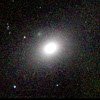
M86
( NGC 4406 ) | Lenticular or elliptical galaxy |
12h26.2m
+12° 57' |
8,9m |
9'×6' |
Virgo
(Vir) |
|

M87
( NGC 4486 ) | Elliptical galaxy |
12h30.8m
+12° 23' |
8,6m |
8'×7' |
Virgo
(Vir) |
Virgo A Galaxy |

M89
( NGC 4552 ) | Elliptical galaxy |
12h35.7m
+12° 33' |
9,7m |
5'×5' |
Virgo
(Vir) |
|
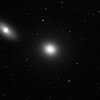
M105
( NGC 3379 ) | Elliptical galaxy |
10h47.8m
+12° 35' |
9,3m |
5'×5' |
Leo
(Leo) |
|

M110
( NGC 205 ) | Elliptical galaxy |
00h40.4m
+41° 41' |
8,0m |
22'×11' |
Andromeda
(And) |
|
Marathon Messier
Marathon Messier - a kind of "race" for astronomers, observers. No, with the telescope behind you, there's no need to run anywhere :).
The fact is that twice a year, on a new moon in March and in October, such conditions develop,
that all objects of the Messier catalog can be seen in one night!
This is the name of the Messier Marathon. Yes, it is rather not about watching the celestial bodies, but about the speeding up of the telescope.
Nevertheless, it is difficult not to agree with the fact that even in this case the impressions will be higher than the roof!
Alas, if you read this article at the mentioned time, then ... do not rush to rejoice.
In order to perform the Messier marathon, you must be between 10° and 35° north latitude at this time ...
Lives in the north and there is no way to go south with a good telescope? Do not be upset.
The Messier Marathon, albeit in a limited form, can be held in the north.
The main thing is that you now know at what time it's best to do it.
Of course, you will not see the southernmost objects, they will be beyond the horizon.
But all the other objects Messier will be in your field of vision overnight.
This version of the
Messier catalog uses pictures of www.nasa.gov (NASA) and other sources.
Images in the places of their original location are mentioned as free from license restrictions.
In case of misunderstandings, please contact the authors: let me know and they will be deleted.
 Charles Messier (1730-1817) - french astronomer. Since 1751 he worked at the Paris Observatory.
Charles Messier (1730-1817) - french astronomer. Since 1751 he worked at the Paris Observatory.
 Astronomer Pierre Meschen, who worked simultaneously with Messier, discovered almost half of the objects from the Messier catalog.
His first discovery was the spiral galaxy M63.
Messier cross-checked Meshen's messages and put them in his catalog.
Astronomer Pierre Meschen, who worked simultaneously with Messier, discovered almost half of the objects from the Messier catalog.
His first discovery was the spiral galaxy M63.
Messier cross-checked Meshen's messages and put them in his catalog.










